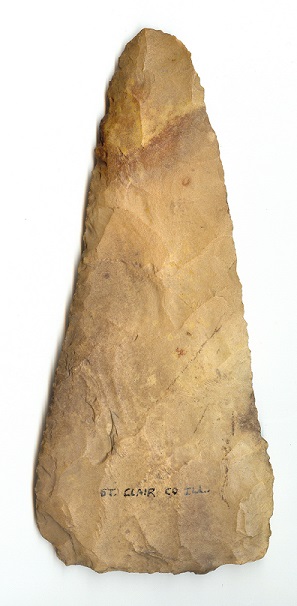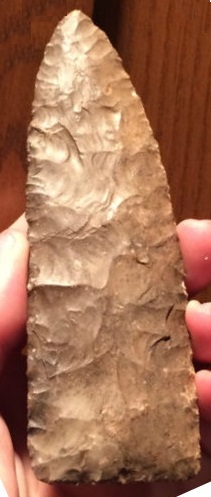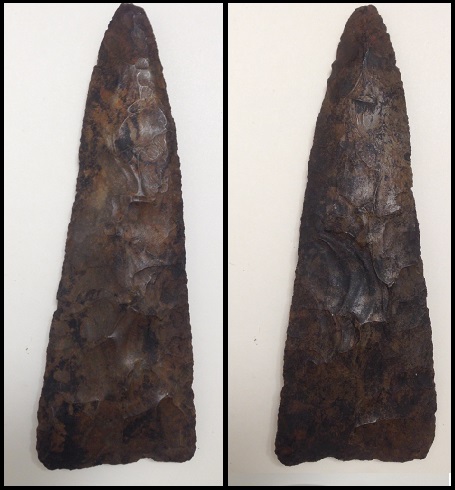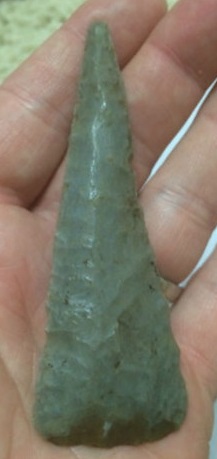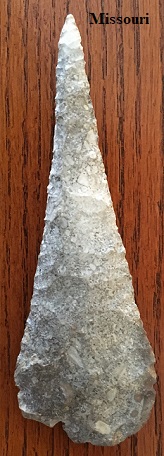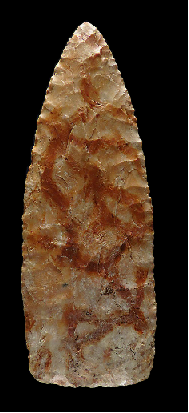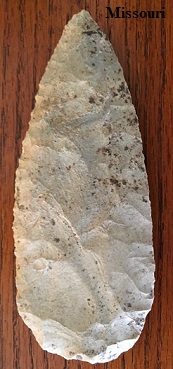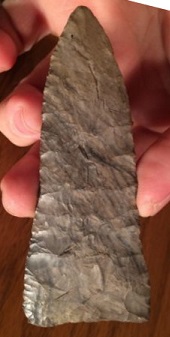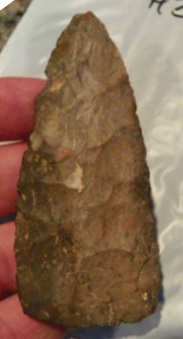Name Details:
Named By: David L DeJarnette, Edward Karjack, James W. Cambron
Named For: Type Site
Date Identified: 1962
Type Site: Stanfield-Worley Bluff Shelter, Colbert County, Alabama
Stanfield
Cluster:
Commonly Utilized Material:
Date:
Cultural Period:
10,000 -8,900 B.P.
Transitional Paleo
Early Holocene
Glacial Period:
Culture:
Outline is Representative of Size and Shape:
Description of Physical Characteristics and Flaking Pattern:
This is a medium to large
(2.5 to 5 inches) lanceolate point. The cross section for the blade is elliptical with the cross section flattened at the hafting region. The blade is primarily excurvate towards the tip and becoming parallel at the hafting region. The base is usually straight, but may be slightly convex on some
examples. Basal thinning
and grinding is common for this point, except in Florida where basal
grinding and thinning is absent (Bullen,
1975) Rarely this point may be fluted. The blade of this point may have a median ridge with collateral flaking and random flaking at the hafting region.
Size Measurements:
Total Length - 51 to 137 mm (59 to73 mm average), Base Width - 16 to 46 mm (22 to 28 mm average), Thickness - 5 to 13 mm
Distribution:
Distribution Comments:
This point is primarily found in the Gulf Coastal region. It is found with less frequency in the Tennessee River Valley and it's tributaries.
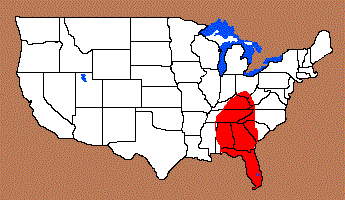
Similar Points:
Benton Blade, Cobbs, Copena Triangular, Fort Ancient Blade, Frazier, Jeff, Kirk Blade, Meserve, Paint Rock Valley, Plainview, Redstone, Tennessee River Additional Comments:
Baker (1995) feels that this biface type served
as a knife blade, noting finely flaked blade edges and a twisted
rhomboid cross section. A key to this type is a finished blade with
basal edge retouch.
Whatley (2002) notes that many rough triangular lanceolate bifaces and
preforms are incorrectly classified as Stanfields.
See link below for additional examples
Other points in this Cluster:
Point Validity: Valid Type
Dejarnette what the first anthropologist hired by the University of Alabama and was an expert on southeastern archaeology.
Kurjack studied Alabama archaeology as a graduate student at the University of Alabama and went on to become an expert on Mayan anthropology. Cambron is a distinguished avocational archaeologist that did extensive work in Alabama and the Tennessee River valley. This point was named in a personally published book. This point has
been referred to in numerous professional publications and is considered a valid type.
.
Age Details:
References: (See Reference Page, Entry Number):
12, 23, 30, 59, 162, 167, W18
Stanfield Projectile Point, Stanfield Arrowhead
